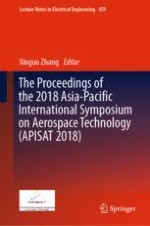2019 | OriginalPaper | Chapter
Efficiency Estimation of Formation Flight Types
Authors : Yang Tao, Zhiyong Liu, Neng Xiong, Yan Sun, Jun Lin
Published in: The Proceedings of the 2018 Asia-Pacific International Symposium on Aerospace Technology (APISAT 2018)
Publisher: Springer Singapore
Activate our intelligent search to find suitable subject content or patents.
Select sections of text to find matching patents with Artificial Intelligence. powered by
Select sections of text to find additional relevant content using AI-assisted search. powered by
